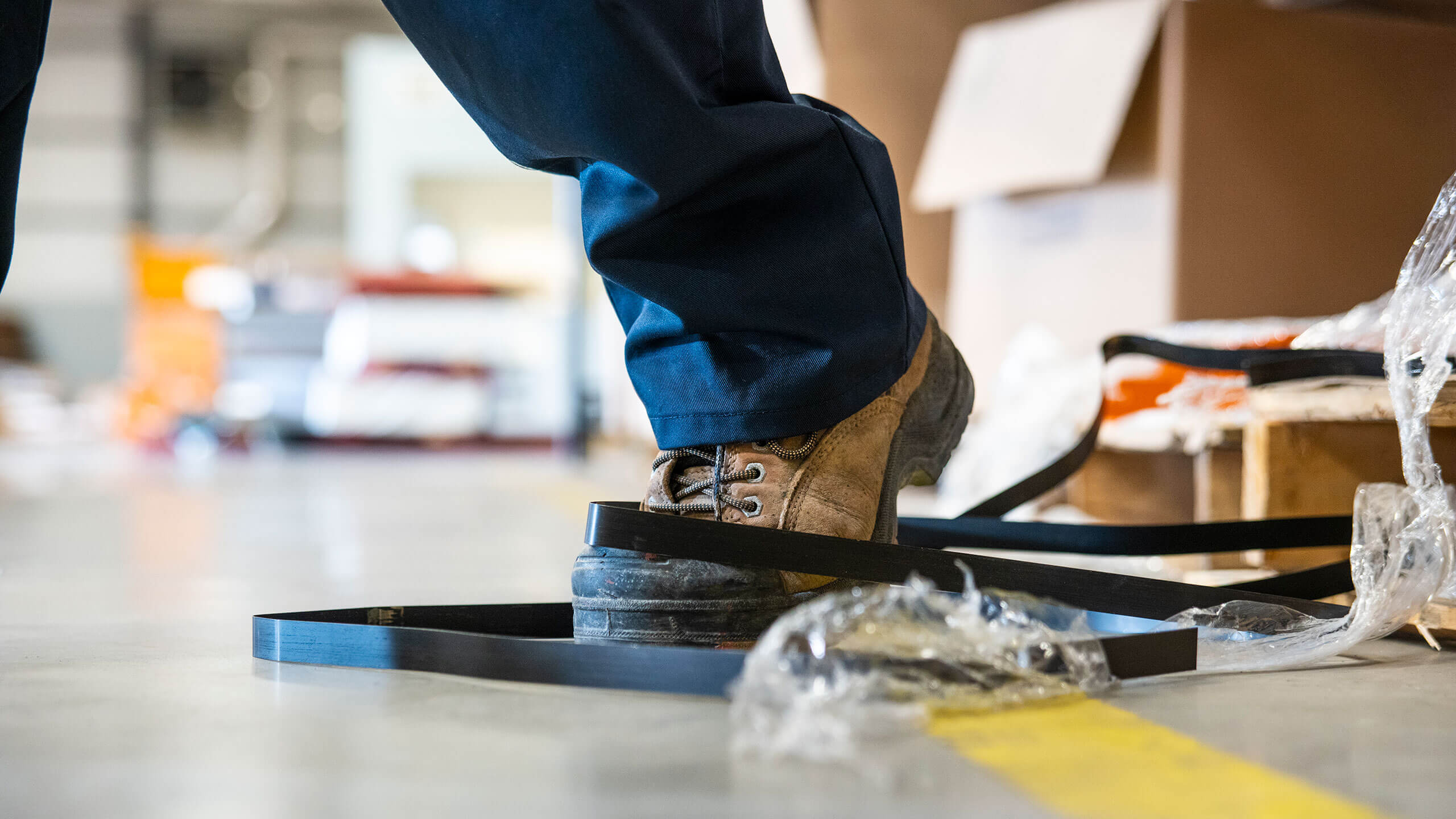Slip, Trip and Fall Prevention
Falls are the second leading cause of unintentional injury-related deaths in the United States, with 44,630 lives lost in 2022 (CDC). They also lead to an estimated 3 million emergency department visits each year among older adults alone (CDC). These incidents aren’t limited to homes and public spaces—in the workplace, slips, trips, and falls are a leading source of injuries, claims, and lost productivity.
At Medcor, we help employers reduce the risk of fall incidents with proactive safety programs, onsite clinics, and expert guidance tailored to your work environment. Learn how to build a safer workplace with these essential prevention strategies.
Slips, Trips and Falls: How Do They Happen?
Slips, trips, and falls are often grouped together, but each has unique causes—and understanding these differences can help employers take more targeted action. Below, we break down the most common reasons for each type of incident and offer practical ways to reduce your risk.
Slips
Slips occur when a surface becomes too slick to safely walk on. These types of incidents often happen without warning and can be particularly dangerous in fast-paced or high-traffic environments.
Common causes of slips:
- Wet or oily surfaces
- Occasional spills
- Weather hazards (ice, rain)
- Loose, unanchored rugs or mats
- Uneven traction on walking surfaces
Trips
Trips happen when something disrupts your walking pattern—causing you to lose balance and fall forward. Cluttered spaces and poor visibility are usually to blame.
Common causes of trips:
- Poor lighting
- Obstructed views
- Cables, clutter or open drawers
- Wrinkled or loose carpeting
- Uneven walking surfaces (steps, thresholds)
Falls
Falls are the result of slips and trips, or sometimes a loss of balance from a height. Many assume falls only happen on ladders or rooftops, but same-level falls are far more common and just as serious.
Common causes of falls:
- Rushing or being distracted
- Carrying items that block vision
- Loose flooring or mats
- Cluttered walkways
- Inappropriate footwear
- Broken stairs or handrails
Preventing Slips, Trips and Falls
Prevention starts with smart planning, awareness and the right interventions. Employers can significantly reduce fall-related injuries by improving walking surfaces, encouraging reporting and training workers to recognize hazards.
Preventing Slips
To reduce the risk of slips, keep surfaces dry, clean and consistent. Even a small spill can result in a major injury if it goes unnoticed or unaddressed.
How to prevent slips:
- Take short, cautious steps on slippery surfaces
- Clean up spills immediately
- Avoid grease buildup
- Watch for slick or waxed floors and loose rugs
Preventing Trips
Keeping paths clear and well-lit is key to avoiding trip hazards. Focus on organization and visibility to help employees move around safely.
How to prevent trips:
- Don’t carry loads that block your view
- Ensure all areas are well-lit
- Keep floors clear of clutter and cables
- Report and fix uneven flooring
Preventing Falls
Falls can often be avoided with simple behavior changes and proper safety infrastructure. Reinforce safe movement and eliminate opportunities for imbalance.
How to prevent falls:
- Use stairs—don’t jump from landings or docks
- Repair broken stairs or railings promptly
- Keep aisles well-lit and unobstructed
- Wear proper, non-slip footwear
Workplace Safety and Injury Prevention
Medcor’s workplace safety programs help reduce injuries and improve safety culture. From safety audits to onsite clinics that treat slip, trip and fall injuries directly on the job site, our solutions keep workers healthy and operations running.
FAQs About Slips, Trips and Falls
What are the 5 P’s of fall prevention?
The 5 P’s are:
- Planning – Identify hazards in advance
- Prevention – Implement controls and safety equipment
- Participation – Engage employees in safety training
- Protection – Provide proper PPE and footwear
- Post-Incident Protocol – Document and respond to incidents
What is the OSHA standard for slips, trips and falls?
OSHA’s fall protection standards are outlined under 29 CFR 1910 and 1926. These cover walking-working surfaces, ladder safety and required fall protection systems.
